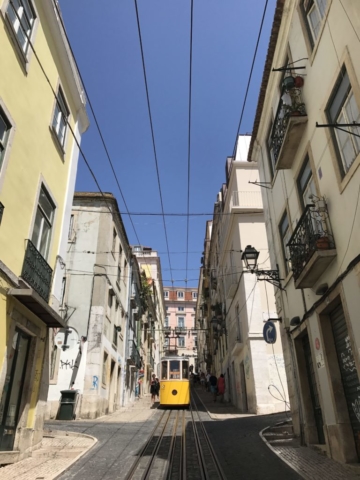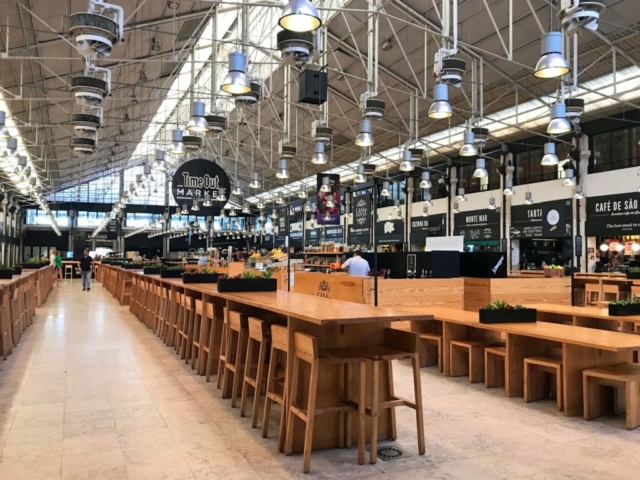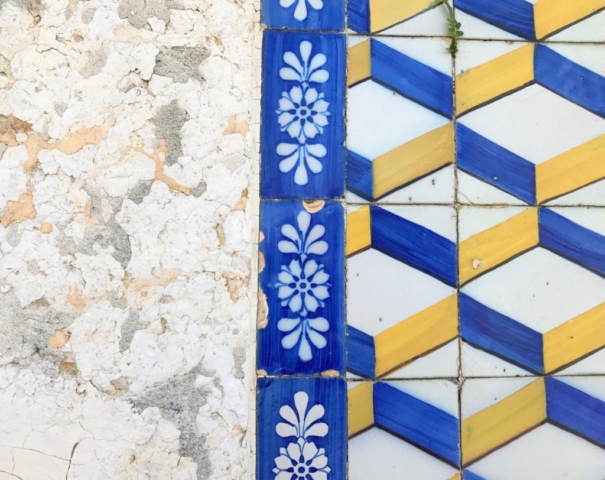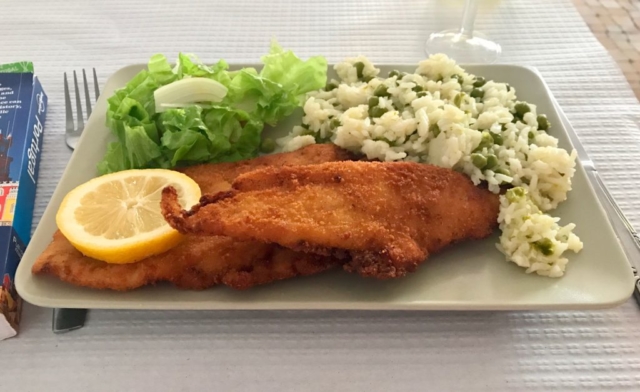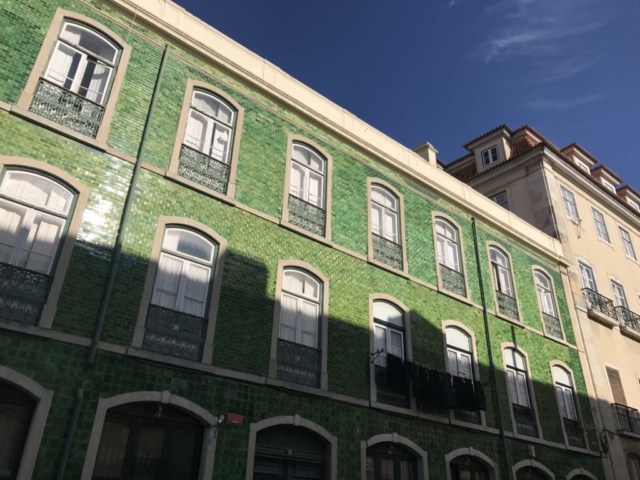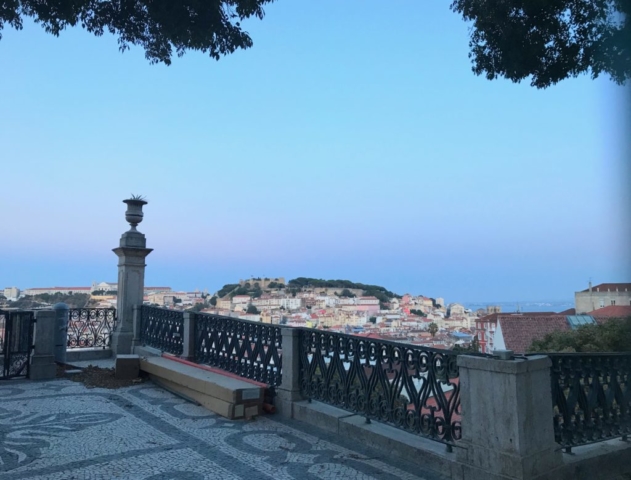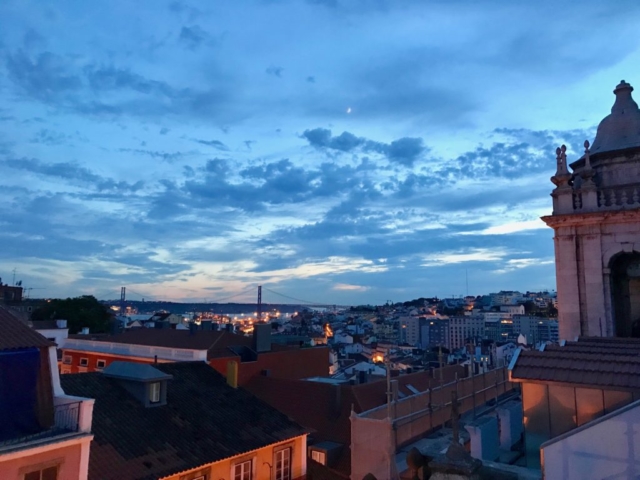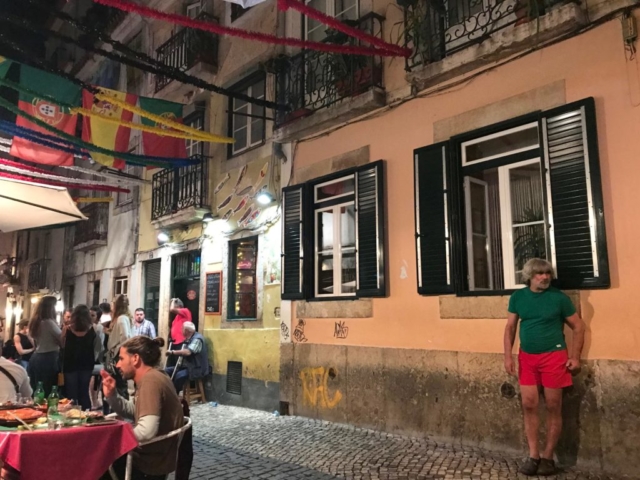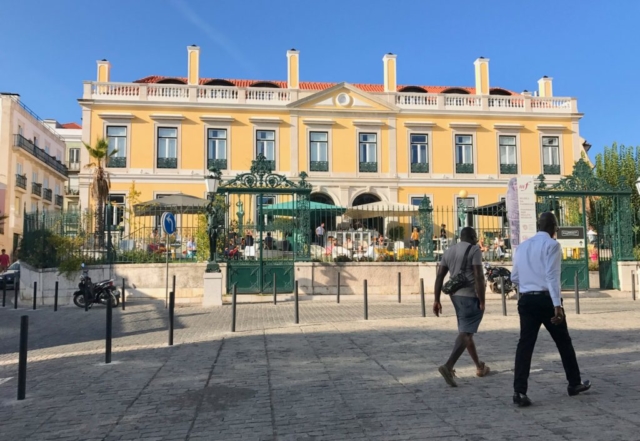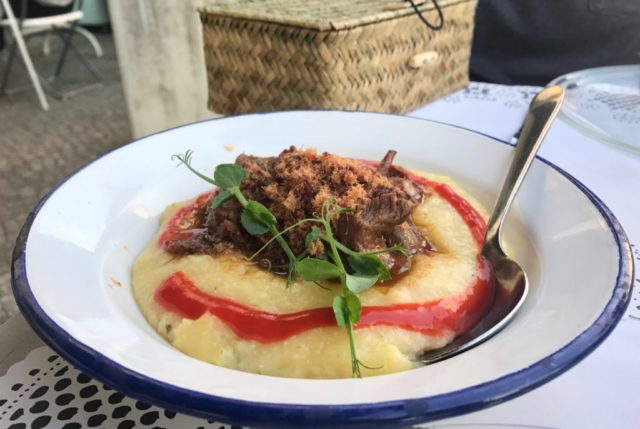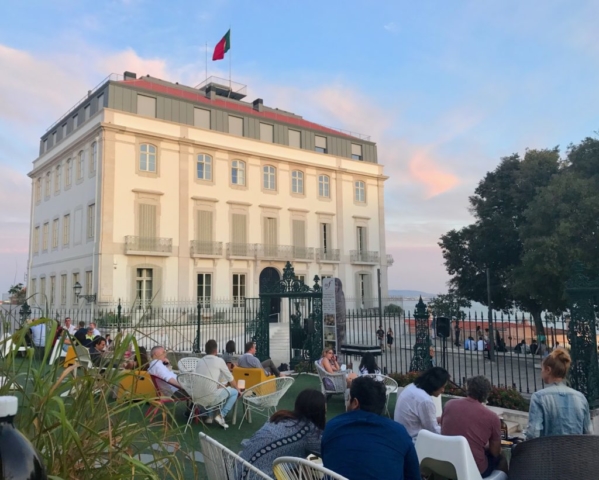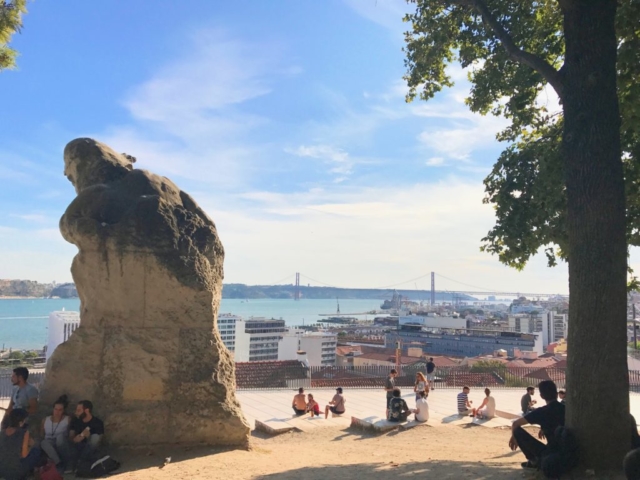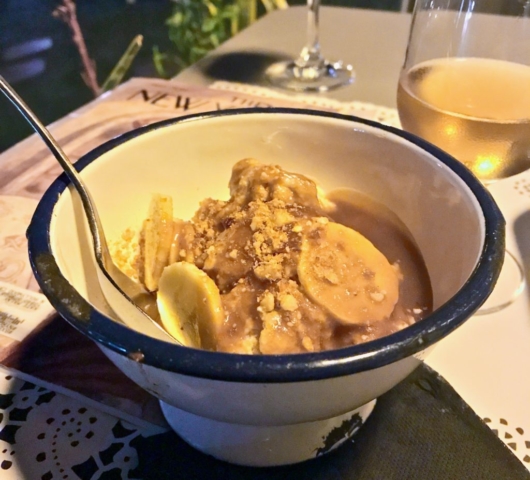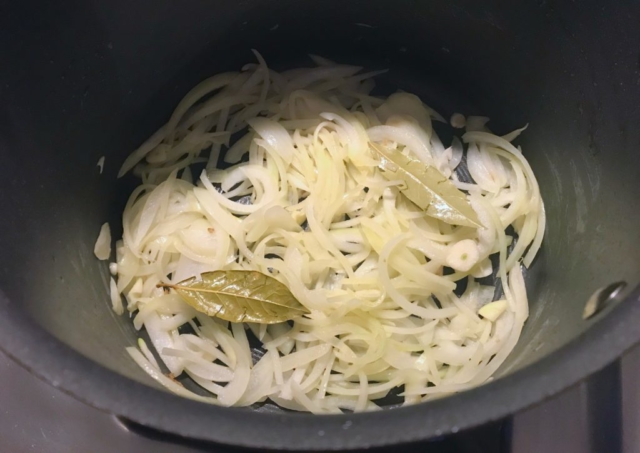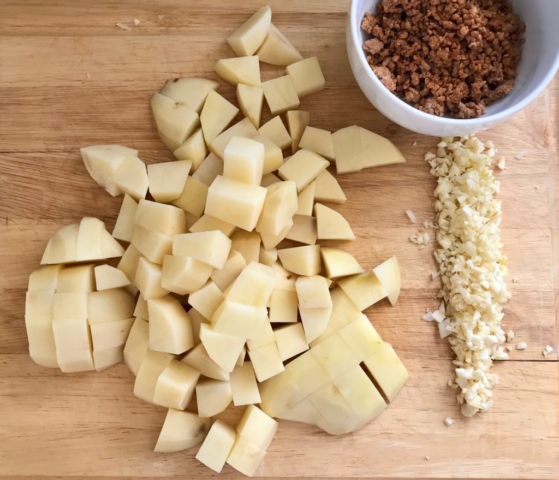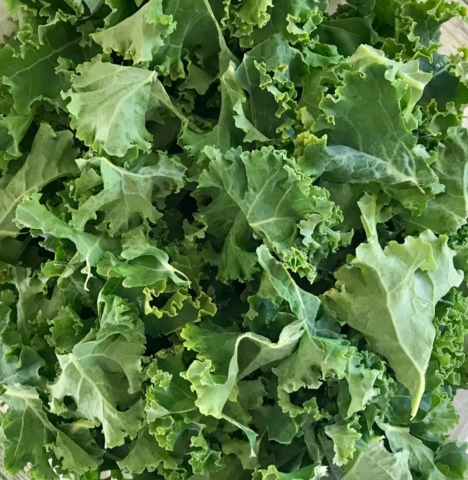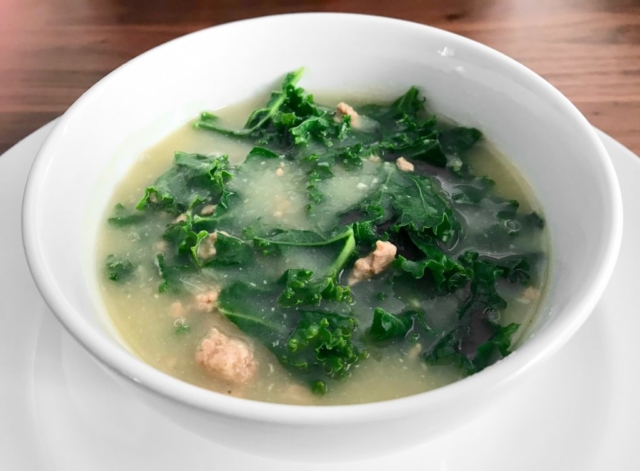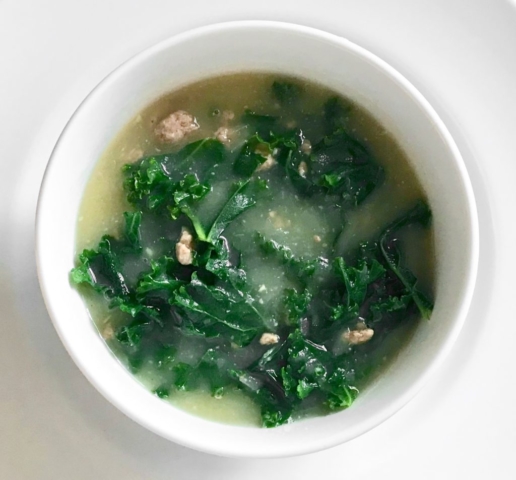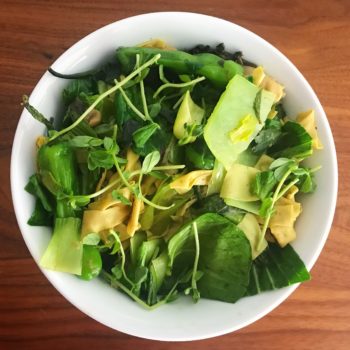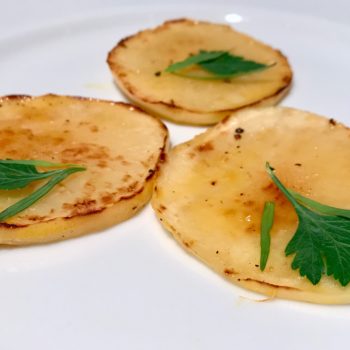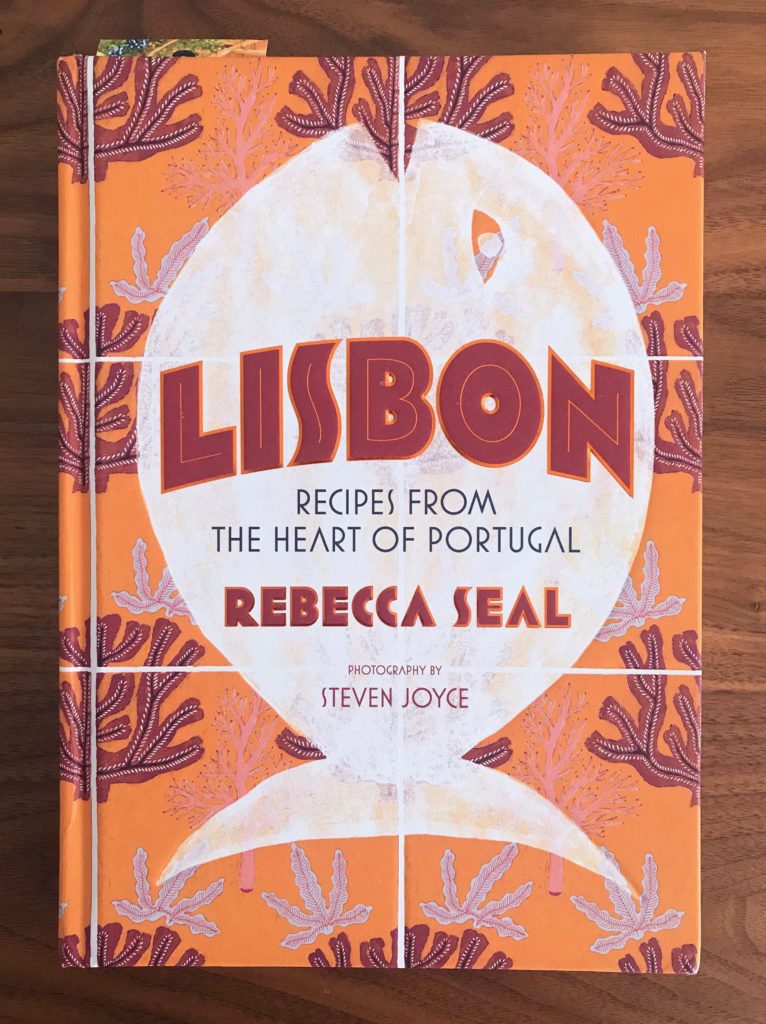
Lisbon: Recipes from Portugal’s Beautiful Southern Region
Rebecca Seal
Photographs by Steven Joyce
2017
Purchased from Skylight Books in Los Feliz, Los Angeles
Recipes cooked: Partridge escabeche (with game hens), shredded greens soup with chorizo, peas with sesame
Recipes I want to cook: Bacalhous à Brás; piri piri chicken; pork with clams
Difficulty to source: Easy to medium
Difficulty to make: Easy to medium
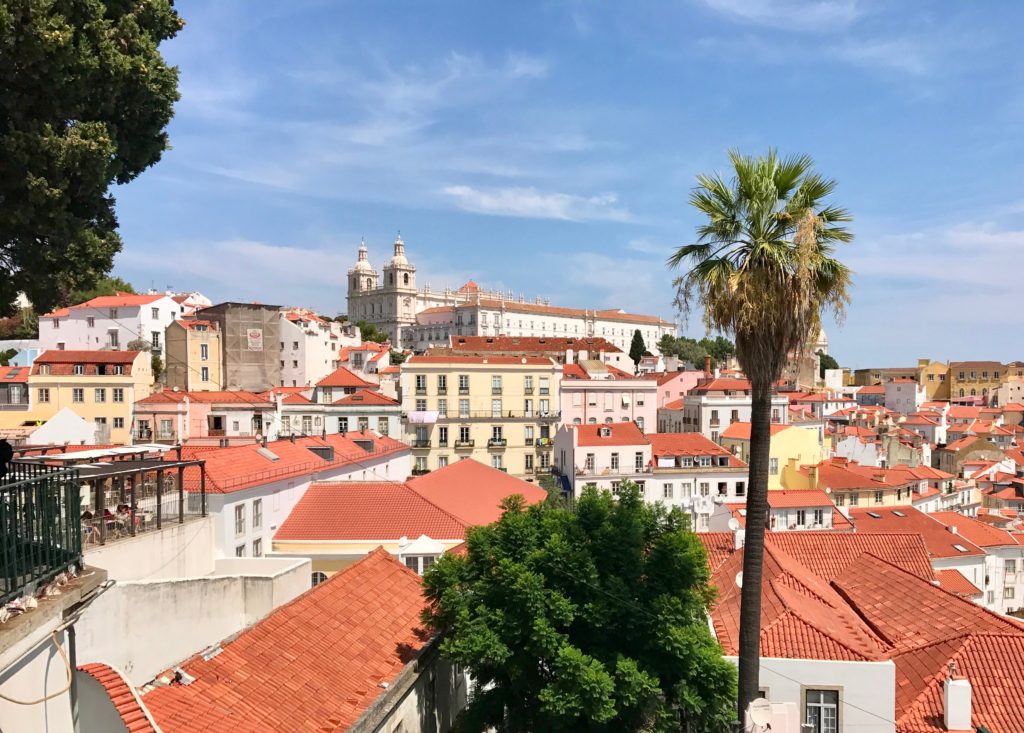 Beautiful Lisbon
Beautiful Lisbon
“Kate!” Fabiano blurted out almost breathlessly when he opened the door into the guesthouse foyer around 8 a.m., where I’d waited with my luggage since my arrival to Lisbon at dawn. Brazilian, boyishly handsome, with soccer player half-shaved, half-slicked hair and a huge grin—always, I’d find out—he kissed my cheek to greet me, and I still remember being revived from my formidable eastbound jetlag by his cologne. “Are you hungry? I take you somewhere very good. Let’s go.”
(Keep reading about Lisbon, or hop on a bright yellow tram to the review here.)
My guesthouse was on a quiet alley on the south side of a thoroughfare from bustling Bairro Alto, promising sigh-inducing hilltop views south toward the Tagus; close proximity to historic Alfama with the Moorish São Jorge castle perched over its steep, narrow, twisty-turny streets; and stumbling-distance access to one of Europe’s more notable nightlife scenes. (You will stumble in Lisbon, too, and likely by lunchtime—the intricately patterned cobblestones were placed a century ago or more, and time only softens their edges, much as it does ours.)
Fabiano and I had communicated in advance of my arrival as he’d arranged for a driver to pick me up from the airport and unlock the guesthouse for me, for no more than the cost of a taxi. His impassive emails really undersold how fervently he would ask after my happiness for the duration of my stay. I was actually traveling for more than a month through four states and two countries, and this would end up being one of the most memorable days.
My first two days in Lisbon, on my own
Fabiano stowed my luggage in the foyer then led me the two slippery cobblestone blocks to Manteigaria, a pastry shop that many quietly think has Portugal’s best pastel de nata, or egg custard tart, over the 180 year-old Pastéis de Belém where they originated—it’s a bit sacrilegious to say so, though, as Belém inherited its recipe from the city’s centuries-old monastery. He paid for me and showed me how to eat the tarts with coffee. When we got back to the guesthouse, he let me freshen up in the staff office then sent me on my way for a few hours until my room was ready so that I could, well, eat more.
I did, at the city’s impressive Time Out Market, a high-ceilinged wood-and-glass assembly of some of the city’s most notable restaurateurs, seafood and meat purveyors, pastry chefs, wine sellers, and homeware designers, each enjoying small crowds at their tidy stalls even at mid-morning on a weekday. When I was finally full of cured meats and little fried things, I traversed streets and alleys going uphill toward the guesthouse, seeing what I’d see. I was tired and still tipsy from all of the complimentary wine on my flight, so I wandered into a piercing parlor and got an earring, the husband-and-wife owners cutely exchanging glances as if to say “she is so American” as we attempted communication through our language barrier and I just smiled and pointed deliriously. It was the third time piercing the same spot (cartilage closes fast if your jewelry falls out), and it’s the best I’ve got. No tattoos, just memorable earrings. Fabiano liked it. I can still hear him say, after carrying my suitcase up five stories, standing in my room with sweat on his brow, “Kate, is there anything else I can do for you? I do anything for you!”
I’m beyond lucky to be well traveled. Seventeen countries, forty-one states, unsatisfying prime numbers that beg for more. Lisbon is a favorite. I can think of a few cities where the food is the only compliment I can pay to them, and Lisbon is the opposite of that—a city where the food is what I might mention last when explaining my love for it, when actually, the food is astonishingly good.

I bought Rebecca Seal’s Lisbon when I saw it without even opening it; I knew her reputation as an author and I missed the cuisine and I was drawn to the cover art. I’m glad I did—it’s logical, legible, and lovable, with bright illustrations in the style of Lisbon’s decorative wall tiles marking each chapter. My ad agency creative director husband flipped through it, then flipped through it some more, admiring its design.
And Steven Joyce’s photography would be reason enough to purchase the book—imagine a handsome fisherman in a rain slicker and shorts, standing in a loading dock with thousands of wide-eyed sardines flapping around his bare feet; a very serious mustachioed cook standing over a huge pan donning a yellow cartoon-drawing “Lisboa” apron, as a child might wear; the setting sun casting warm light on pastel apartment buildings with their intricately patterned wrought-iron balcony railings; the glistening surfaces of fava beans and baked cheese and head-on shrimp in fish stew; the custard tarts. The only problem I have with Lisbon is how sad it makes me that I’m not in Lisbon. But at least I can cook some of the distance between us away.
Pharmacia
I started with partridge escabeche (page 148). “This meat escabeche recipe uses the same technique as the perhaps better known fish escabeche on page 38,” Seal writes. “I first tried a version of this, made with quail, at chef Susana Felicidade’s restaurant, Pharmacia (which takes its name from the pharmaceutical museum it shares a home with). Its garden has one of the best views in town of Lisbon’s skyline and then out across the river.”
I’d eaten at Pharmacia twice in six days, ordering mostly the same dishes: homemade bread with pâté and local butter, soft Iberian pork stew with pork floss over polenta with sweet red pepper relish, and caramelized banana and peanut butter mousse with little crispy things, like a banana Butterfinger. The first night, I also had their sopa Alentejana, a soup of coriander broth, olive oil, bread, and garlic, with a poached egg, often referred to as “beggars’ soup.”
Inevitably, I had to make the restaurant’s escabeche with what I have available to me, Cornish game hens. The recipe was easy and inexpensive and comforting, with silken bird meat in a deeply flavorful and aromatic broth, even with marginal quantities of garlic, sweet paprika, and white wine. This was Lisbon, in my bowl—just without the city view from the museum’s lawn.
Partridge escabeche, with Cornish game hens
Similarly, for the shredded greens soup with chorizo, I couldn’t find Portuguese chouriço and didn’t want to use another premade sausage that would likely stray so far from tradition as to cross the Atlantic, so I bought ground pork and seasoned it (heavily) myself. The soup only calls for kale, potato, onion, and garlic besides. This is a recipe you should make for someone you’re dating when you start to have those awkward nights where you invite each other over to watch a movie. You don’t want to spend forever in the kitchen or fall asleep on the couch because you’re full—I know. Don’t mind the alliums; their sharpness gets cooked out of them so only the sweetness remains. It’s healthy, satisfying, and pairs well with wine—maybe say something Fabiano would say, and see what happens.
What do Lisboetas traditionally eat? Culinary historians point to the influences of the cultures that have dominated the city for almost two millennia (Roman, Islamic Moor, Iberian factions), and accordingly, the most quintessential recipes in Lisbon call for some combination of peppers, tomatoes, onions, garlic, lemons, ginger, paprika, cinnamon, cumin, coriander, turmeric, curry leaves, bay leaves, fresh herbs, wine, vinegar, olive oil, rice, bread—oh, and seafood. It could be tempting to compare it to the cuisines of other Mediterranean countries, but that would be insulting all around. They don’t even speak the same language.
Seal did similar cookbooks translating the cuisines of Turkey and Greece for the far West, and she’s concise, confident, and colorful in her writing. Lisbon has so many facets, though, which are all at once historic and eclectic and bold, and she lets them shine to their fullest in her cooking. There are predictable recipes for salt cod fritters and fish stews and pastries, but there are as many recipes for seemingly unlikely cultural exchanges, like Japanese tempura, Indian curry, and southeast African piri piri chicken.
Caldo verde, shredded greens soup with chorizo
There are also wildly endearing moments, as when Seal says she loves serving her hot pepper paste “with delicate wobbly fresh cheese, smearing both onto pieces of crusty bread” (page 170), explains that “pica pau actually translates as ‘woodpecker,’ but the name comes from the motion used to eat this dish, not what’s in it” (page 45), and admonishes, for her flaming chorizo, “never pour alcohol from a bottle onto an already burning flame, as this can result in a fireball” (page 154). You’ll read about “cold beers and plastic cups of sweet sangria” (fresh sardines on toast, page 23), salt cod fritters “hot and fluffy within” (page 39), and those tempura green beans translating as “‘little fishes of the garden,’ which I love” (page 25).
Instructions are clear, equipment is basic, ingredients are easy to source, substitutions are given, and encouragement to season to taste is given throughout—I love a cookbook that both guides and empowers its home cook. And I love a cookbook that really takes you there.
The best thing you can do this summer is go to Lisbon. Until then—cook Lisbon.

